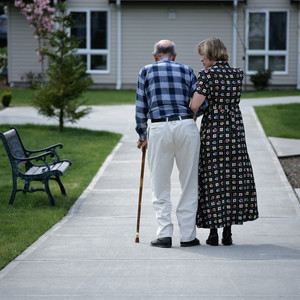Generics are commercialized once active ingredient’s patent of a brand-name drug expires. Brand-name to generics substitutions are encouraged and favoured due to the considerable savings for both patients and payers. Comparative bioavailability studies ensure pharmacokinetic equivalence between a given brand-name drug and corresponding generics, with similar requirements worldwide. However, no clinical equivalence studies are required before generics commercialization. After commercialization, few studies have assessed outcomes between brand-name and generic drug users in cardiology, especially at a population level.
A retrospective interrupted time series analysis evaluated the clinical impact of the commercialization of three generic angiotensin II receptor blockers (ARBs) on adverse events: hospitalizations or emergency room consultations [1]. The study was conducted using data from the Quebec Integrated Chronic Disease Surveillance System, a twinning of healthcare claims databases where Quebec citizens (Canada) are identifiable by an anonymized number. During the period surrounding patent expiry and generics commercialization, users of either brand-name or generic losartan, valsartan or candesartan, aged 66 years or older, were identified (n = 136,177). Rates of adverse events associated to each drug were calculated monthly, 24 months before and up to 12 months after generics commercialization. Statistical analyses estimated time trends and level change of adverse events for each drug and segment of time.
For all users (brand-name and generics), there was an approximate monthly mean rate of 100 adverse events for 1,000 ARB users before and after generics commercialization. During the first month of generics commercialization, among generic drug users of losartan, there was an increase in rates of adverse events of 8.0% (up to 108 for 1,000 users). The immediate increase of adverse events was 11.7% for valsartan (up to 112 for 1,000 users) and 14.0% (up to 114 for 1,000 users) for candesartan. Up to 1 year after generics commercialization, the trend in adverse events was affected for generic versus brand-name losartan users only, with generic drug users suffering more adverse events.
Most users of a brand-name drug were switched to generic versions within two or three years after it became available. The observed increase in adverse events could reflect an acute response to equivalent, but not identical, generics for newly switched patients. Patients could have been substituted from the brand-name version to a generic version that is pharmacokinetically different (even if it falls within health authority norms).
Results must be interpreted cautiously for many reasons. First, time series report crude rates of adverse events. Technically, regression models could not be adjusted for potential confounders, which could have explained, at least in part, the findings. Considering this, authors have performed many sensitivity analyses, which consistently revealed higher rates of adverse events for high and low comorbid patients, as well as high and low socio-economic status.
In addition, even if claims data is considered reliable, there may be some inaccuracies hiding potential explanations for the results.
Generic ARBs are bioequivalents (but may not be clinically identical) to brand-name drugs, and it is possible that a switch between drug types induces symptoms, leading to emergency room consultations or hospitalizations for elderly patients. Healthcare professionals should seriously listen to patients when they report symptoms following generics substitution.
This study reveals a potential drug safety signal. However, this signal requires clinical validation and more studies from other jurisdictions and therapeutic areas before it leads to a change in licensing processes.
Abstracted by Dr Jacinthe Leclerc, Professeure Adjointe, Département des Sciences Infirmières, Université du Québec à Trois-Rivières, Quebec, Canada.
Conflict of interest
Several of the authors of the research paper [1] have served in a consultant/advisory role or have received research funding from mAbxience Research. For full details of the authors’ conflict of interest, see the research paper [1].
Related article
Impact of delisting ARBs in Denmark
Reference
1. Leclerc J, Blais C, Rochette L, Hamel D, Guénette L, Poirier P. Impact of the commercialization of three generic angiotensin ii receptor blockers on adverse events in Quebec, Canada: a population-based time series analysis. Circ Cardiovasc Qual Outcomes. 2017;10(10). pii: e003891.
Permission granted to reproduce for personal and non-commercial use only. All other reproduction, copy or reprinting of all or part of any ‘Content’ found on this website is strictly prohibited without the prior consent of the publisher. Contact the publisher to obtain permission before redistributing.
Copyright – Unless otherwise stated all contents of this website are © 2018 Pro Pharma Communications International. All Rights Reserved.








 0
0











Post your comment